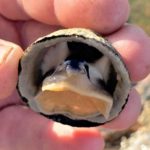Humpbacked conch shells (Gibberulus gibberulus) are true conchs based on the type species Strombus gibberulus. In Swahili, they are called Chuale and are primarily collected by women, who use them for their family’s subsistence and cash income. They are harvested in the highest numbers of all species on each beachcombing trip and are the second most collected species, behind Tiger conchs (Cypraea tigris). However, these are only collected for cash income, not food.
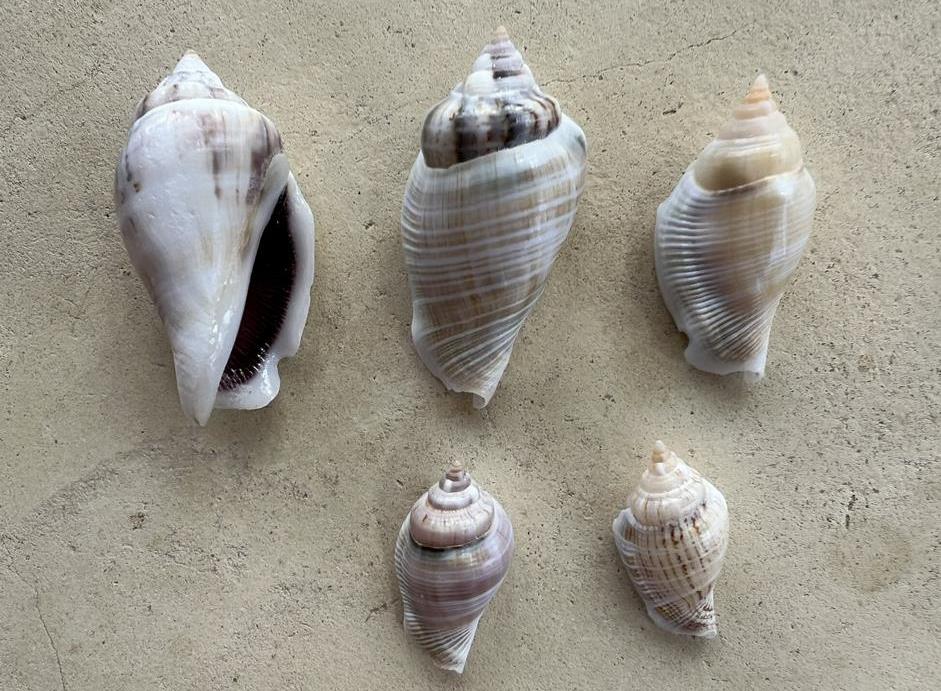
Global distribution
Gibberulus gibberulus occurs from the eastern shores of Africa, throughout Southeast Asia and north-eastern Australia, and in the Pacific islands. Women in Zanzibar collect them all over the lagoons at low tides on sandy and rigid (rock or coral) substrates. Often, these conchs remain in the same area and accumulate green algae on their shells.
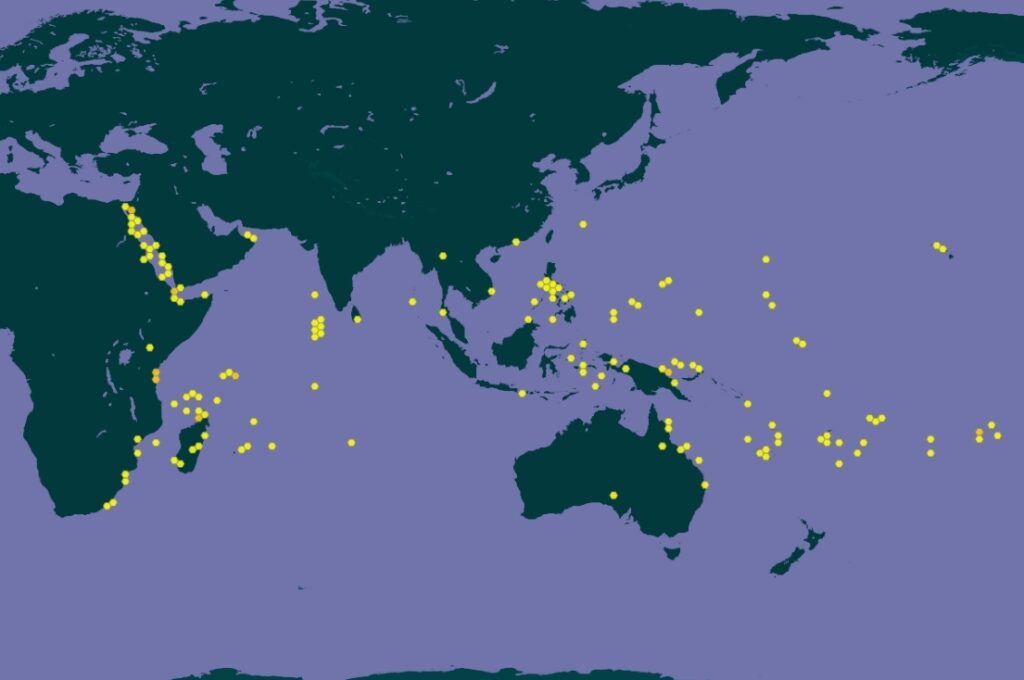
Collection in the lagoons of Zanzibar
Women in Zanzibar are restricted to areas in the lagoons that are shallow enough for walking when collecting invertebrates because they usually do not swim for cultural reasons. Consequently, they work in shallow areas during peak hours of low tide to collect these gastropods (Håkansson et al., 2012).
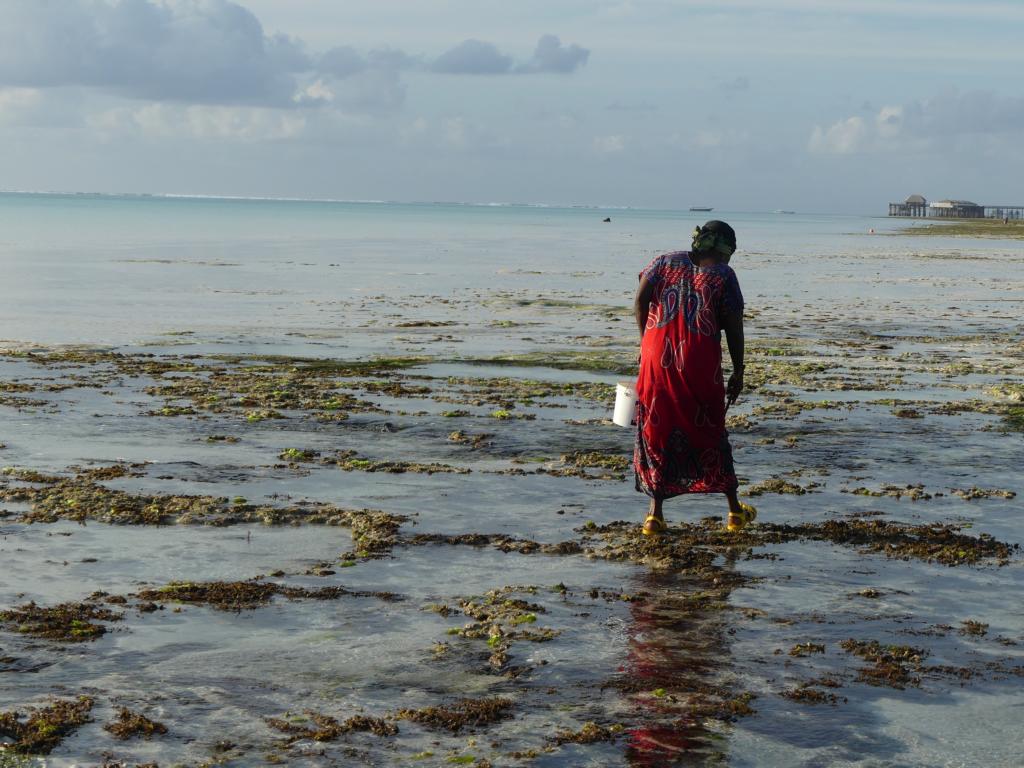
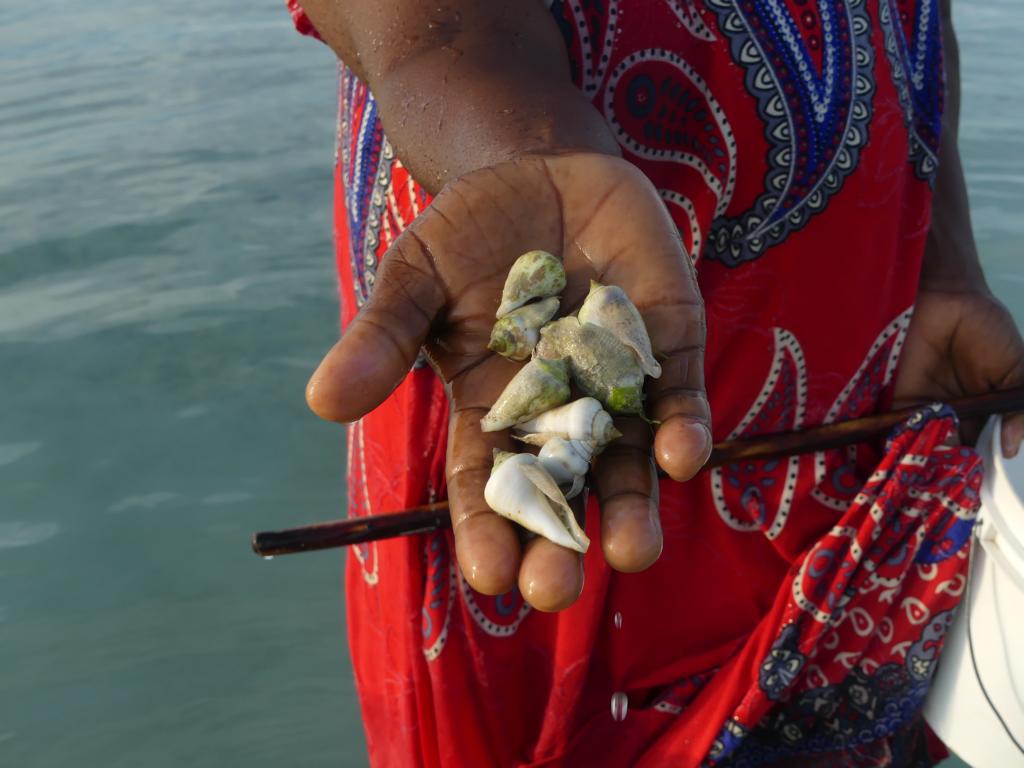
(Håkansson et al., 2012) reported that beachcombing women estimate that they work about four days per week during spring tides when tidal fluctuations are large and larger areas are exposed for longer. They also work two or three days per week during neap tides. Each tide, spring, and neap lasts approximately seven days. Thus, women are engaged in collecting for 14 days per month. Invertebrates are collected all year round; however, rainy days are unsuitable because of reduced visibility.
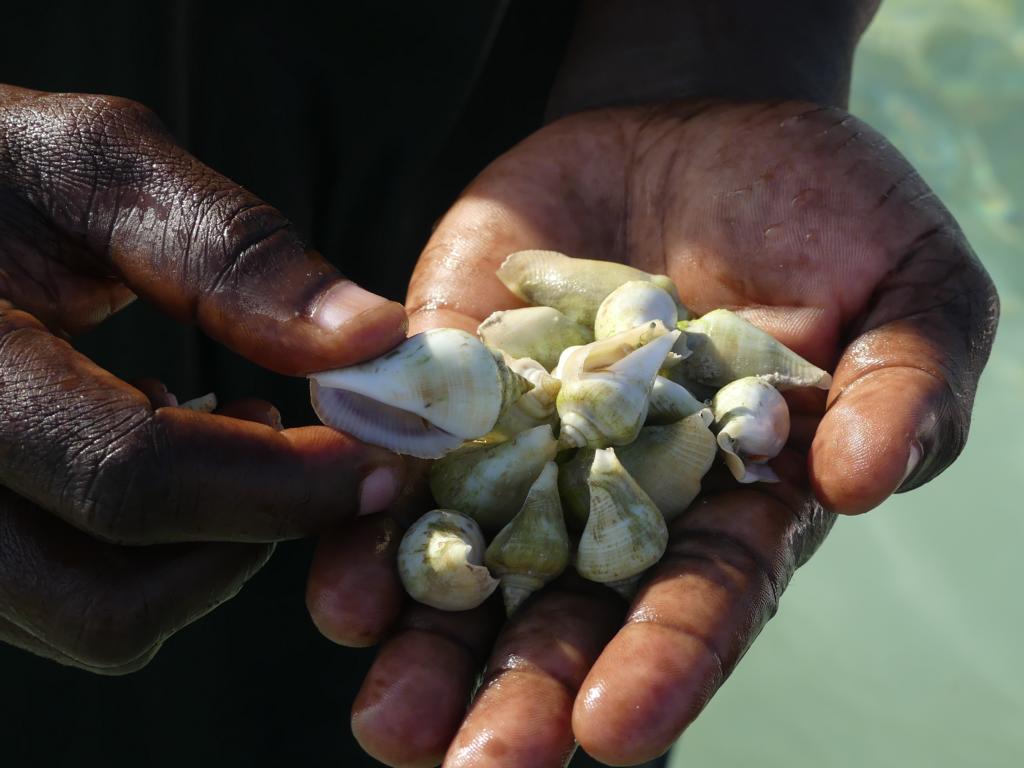
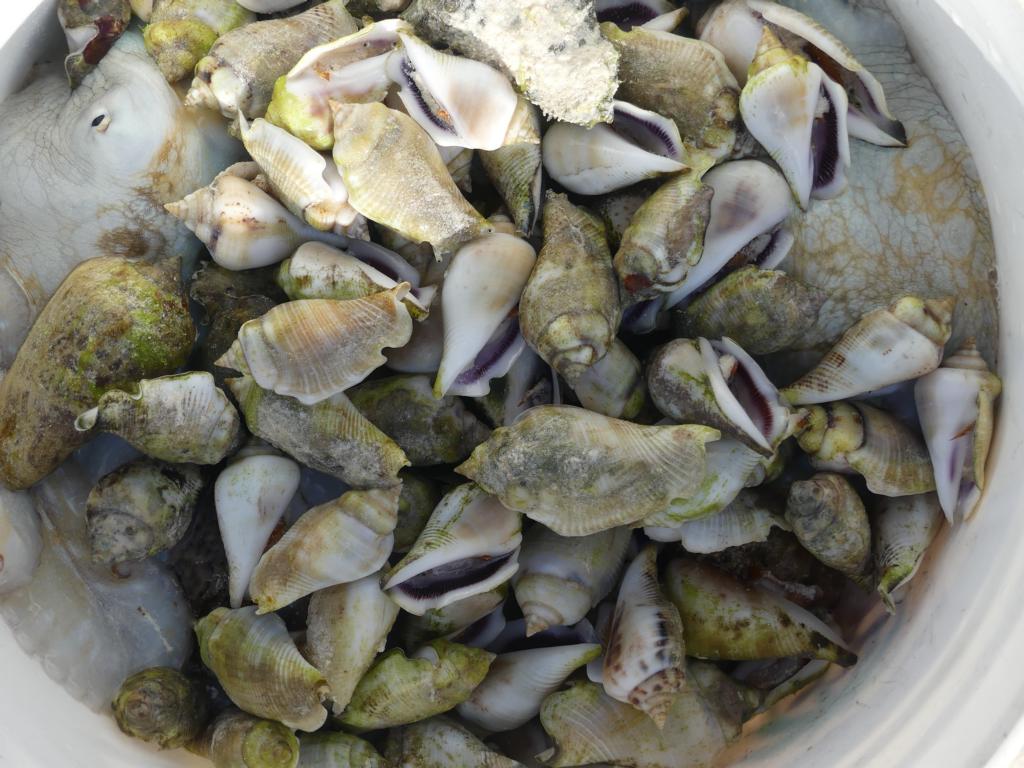
The most common mollusk species collected by beachcombing women at Zanzibar are:
- Humpbacked conch (Strombus gibberulus),
- Philippine Horse mussel (Modiolus philippinarum)
- Tiger cowrie (Cypraea tigris),
Other common gastropod and bivalve species are:
- Crown conch (Volema pyrum),
- Dog whelks (Nassariidae),
- Flag pen shell (Atrina vexillum),
- Gold ring cowry (Cypraea annulus),
- Mangrove whelk (Terebralia palustris),
- Nerites (Neritidae),
- Prickly pen shell (Pinna muricata),
- Ramose murex (Chicoreus ramosus),
- Trapezium horse conch (Pleuroploca trapezium).
How to spot a live conch
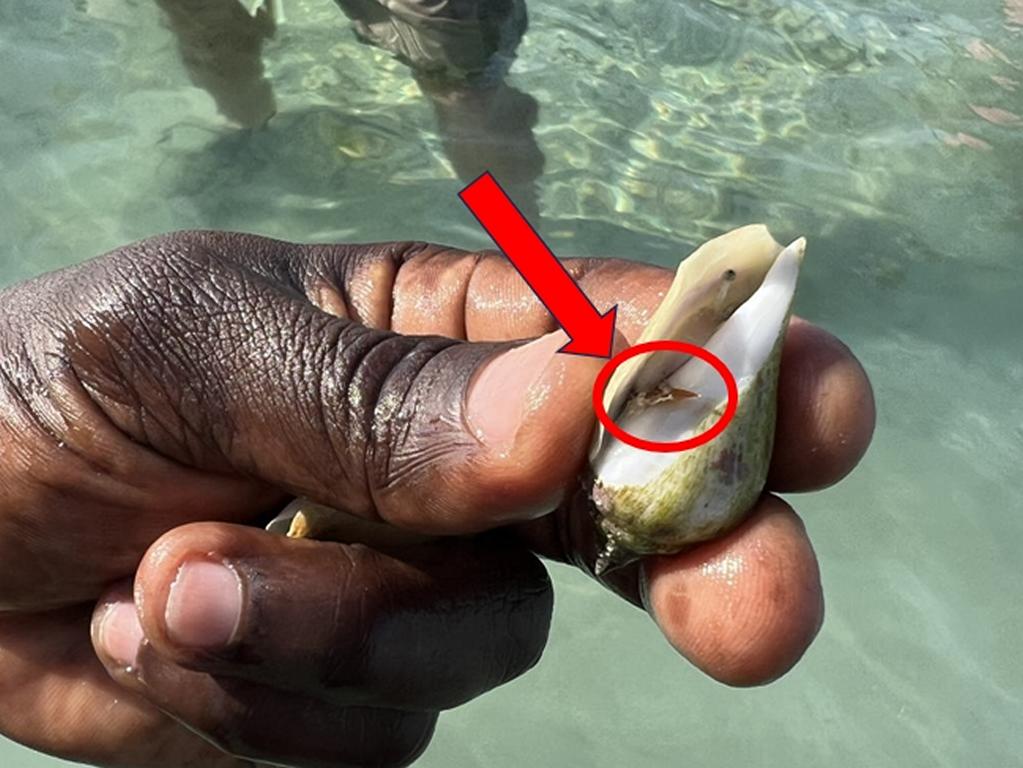
When the beachcombers find a humpbacked conch shell, they take it and inspect the aperture (shell opening). If they see a brown ‘wing’, they know that the shell is alive and the gastropod is inside.
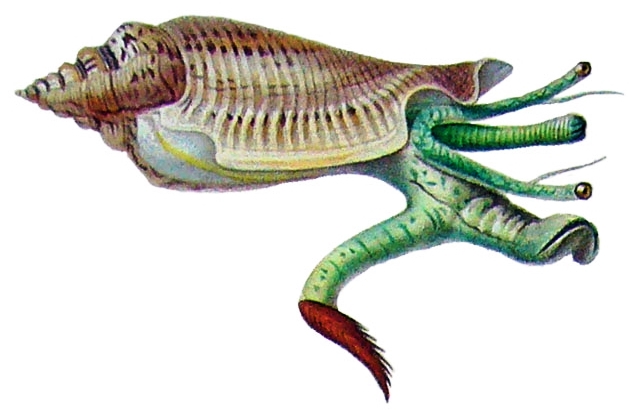
This brown ‘wing’ is the operculum, a rigid, calcareous structure that functions like a “trap door” for the conch. When the conch retreats, it seals the shell’s opening, offering protection from predators and environmental threats. If the operculum is visible, the conch is live and inside.
Humpbacked conchs in the kitchen
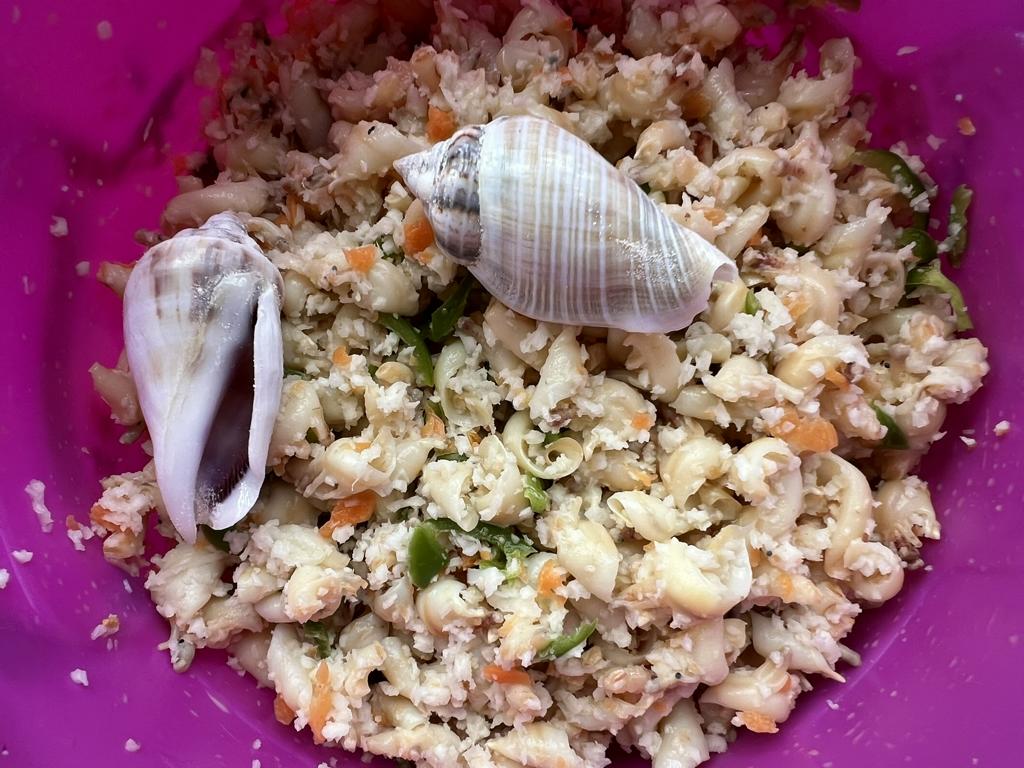
After collection, the conchs are steamed. Thereafter, the whole animal is retrieved from the shell with a wooden spike. All innards are removed so that only the white meat and siphons remain for eating. This meat is mixed with coconut flakes, chopped green peppers, carrots, and a lime juice dressing.
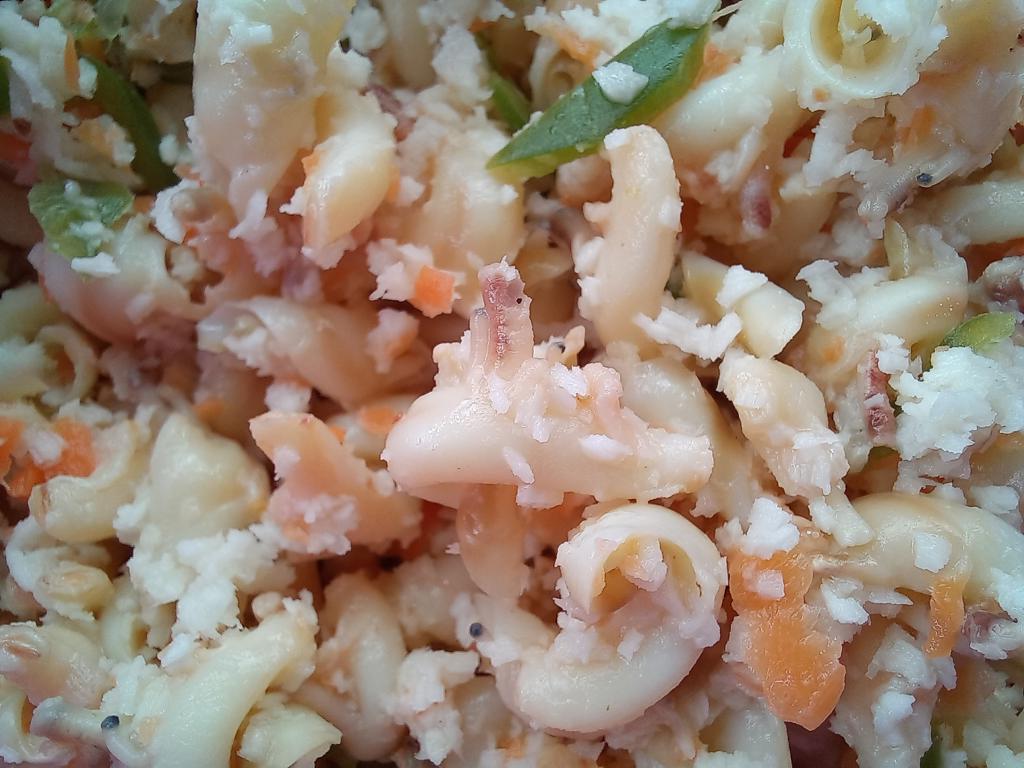
Such a conch salad is just delicious. The sweet, white meat is slightly crunchy and takes on the taste and smell of the other ingredients.
Lessons learned about Humpbacked conchs:
- Humpbacked conchs are a staple food for poor families living on the coasts of Zanzibar.
- These gastropods provide food for themselves and can be sold for cash on the markets.
- When seeing the operculum in the aperture of the shell, it is confirmed that a live animal inhabits it.
- The meat of Humpback conchs is white, firm, and sweet tasting – a real treat.
.




